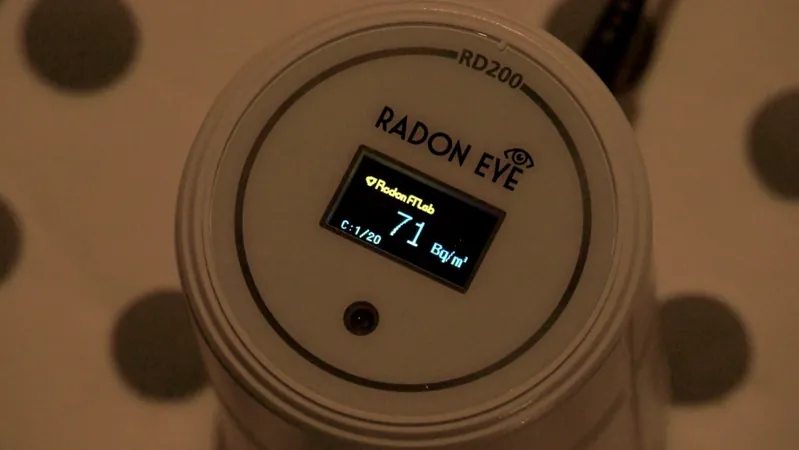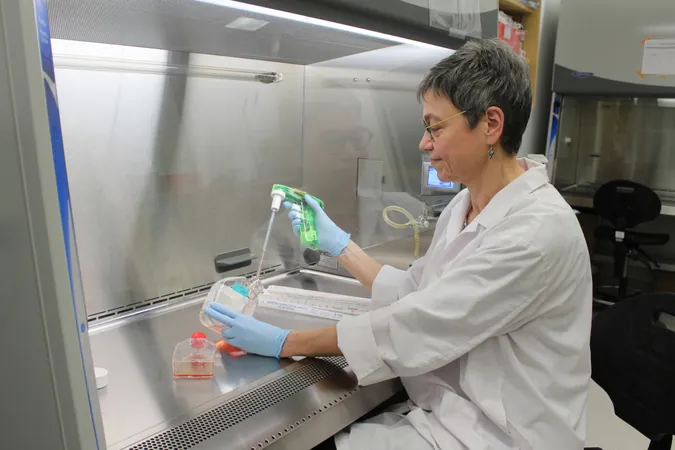
Shocking Revelation: 1 in 5 Canadians at Risk from Deadly Radon Gas in Their Homes!
2024-12-30
Author: Charlotte
A Silent Threat
A recent alarming report highlights a silent but grave threat lurking in Canadian households: radon gas. This invisible, odorless, and tasteless gas is infiltrating more homes than ever, with approximately 17.8% of Canadians—roughly 1 in every 5—exposed to dangerously high levels.
Understanding Radon Gas
Commissioned by Health Canada and conducted by researchers at the University of Calgary, the report reveals a concerning trend that homeowners need to be aware of. “Radon is a natural gas that originates from the ground,” explains Alex Budd, owner of Budd Radon Services. “It results from the decay of uranium found in soil and rock. This gas seeps into homes through cracks in foundations and sump pumps, accumulating over time and posing serious health risks, including lung cancer.”
Health Risks
Indeed, radon is the second leading cause of lung cancer after smoking, and its effects are particularly potent during the winter months. Experts note that during colder seasons, ground freezing combined with limited ventilation—often due to sealed windows—can lead to even higher radon concentrations indoors.
Testing for Radon
Budd insists that every homeowner should consider testing for radon, as the only way to know if your home is harboring this hazard is to conduct a test. In Canada, the health threshold for radon is set at 200 becquerels per cubic meter (Bq/m³), slightly higher than the U.S. limit of 150 Bq/m³, while the World Health Organization recommends a maximum of 100 Bq/m³. If levels exceed 200 Bq/m³, Health Canada advises homeowners to take action within a year to mitigate risks, although individual health effects can vary.
Comparing Risks
“It’s similar to smoking,” Budd explains. “Some people may smoke for decades without developing any lung issues, while others may face dire consequences much sooner. The same applies to radon exposure.”
Mitigation Strategies
Radon testing kits are readily available at various price points in local hardware stores, making it easy for homeowners to assess their situation. If elevated levels are detected, the average cost of installing a radon mitigation system is around $2,500. This system functions by pulling air from beneath the foundation and venting it outside, preventing the gas from leaking back into living areas.
A Personal Experience
Kinburn resident Doug McClenahan discovered the seriousness of radon gas after conducting his test and recording a staggering 1240 Bq/m³ in his basement. “I was flabbergasted with the results,” he revealed to CTV News. McClenahan and his family often leave their home sealed for extended periods, especially when they spend time in British Columbia, increasing their risk of exposure.
Taking Action
After installing a mitigation system, he reports, “We’ve managed to bring those levels down as low as 30 or even 25 Bq/m³, and I feel much more at ease knowing I’ve taken action.”
Conclusion
Interestingly, radon levels can vary significantly, even among neighboring homes, indicating the importance of individualized testing and mitigation strategies. As awareness of this hidden danger grows, it is vital for Canadians to prioritize radon testing to protect their health and the safety of their families. Don’t wait until it’s too late; take action now for a safer home environment!









 Brasil (PT)
Brasil (PT)
 Canada (EN)
Canada (EN)
 Chile (ES)
Chile (ES)
 Česko (CS)
Česko (CS)
 대한민국 (KO)
대한민국 (KO)
 España (ES)
España (ES)
 France (FR)
France (FR)
 Hong Kong (EN)
Hong Kong (EN)
 Italia (IT)
Italia (IT)
 日本 (JA)
日本 (JA)
 Magyarország (HU)
Magyarország (HU)
 Norge (NO)
Norge (NO)
 Polska (PL)
Polska (PL)
 Schweiz (DE)
Schweiz (DE)
 Singapore (EN)
Singapore (EN)
 Sverige (SV)
Sverige (SV)
 Suomi (FI)
Suomi (FI)
 Türkiye (TR)
Türkiye (TR)
 الإمارات العربية المتحدة (AR)
الإمارات العربية المتحدة (AR)